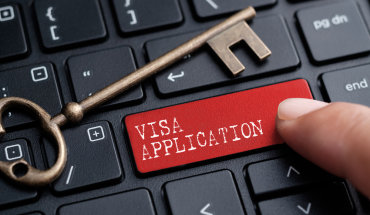WHAT CAP SHOULD WE EXPECT FOR THE FY 2009 H1B VISAS?
Considering that Petitioners are allowed to file up to six months before the date of intended employment the U.S. Citizenship and Immigration Services (USCIS) announced on April 5, 2007 that on April 3, 2007 it had already received enough petitions to meet the congressionally mandated cap for fiscal year 2008 (FY 2008) and that it would conduct a computer-generated random selection of cap-subject petitions filed on Monday (April 2, 2007) and Tuesday (April 3, 2007) to determine which cases USCIS would accept for processing.
As of April 05, 2007 the annual 65,000 H1B visa cap was reached as there were close to 150,000 petitions filed within the first couple of days of the date of availability of FY 2008 H1B visas.
As the legislature and supporters of H1B visas struggle to increase the congressionally mandated annual cap of 65,000 to at least 115,000 and an additional 20 percent every 3 years, we urge employers planning to hire foreign skilled workers under this classification to contact us as soon as the decision that a foreign skilled worker will be needed to fill positions in their companies is made, preferably before April 1, 2008.
In account of FY 2008, when the cap was reached within two days of the opening date (April 1, 2007) some experts, including the USCIS estimate that the cap will reach its limit within a couple of days of the opening of the FY 2009. This means that employers who need workers by October 1, 2008, starting day of FY 2009 will be allowed to file six months before.
H-1B visa information:
The H-1B is a non-immigrant visa category in the United States under the Immigration & Nationality Act, section 101(a)(15)(H). It allows U.S. employers to seek temporary help from skilled foreigners. The H-1B classification is for “specialty occupations” only. The occupation generally requires a bachelor’s degree or equivalent for the application of theoretical and specialized knowledge.
Likewise, the foreign worker must possess at least a bachelor’s degree or its equivalent and state licensure, if required to practice in that field. H-1B work-authorization is strictly limited to employment by the sponsoring employer. Typical H-1B occupations include architects, engineers, computer programmers, accountants, doctors and college professors and a variety of other professions. The H-1B visa program also includes fashion models.
There is an annual cap on H-1B admissions of 65,000 workers per fiscal year. The ceiling set by Congress was 115,000 in both FY1999 and FY2000, 107,500 in FY2001, and back to 65,000 in FY2002. The cap was raised by 297,500 over three years, FY2000-FY2002. 80,000 new H-1B visas were added for FY2000, 87,500 visas for FY2001, and 130,000 visas for FY2002.
In addition, excluded from the cap are all H-1B non-immigrants who work for universities and nonprofit research facilities. Free Trade Agreements allow a carve out from the numerical limit of 1,400 for Chilean nationals and 5,400 for Singapore nationals. Laws also exempt up to 20,000 foreign nationals holding a master’s or higher degree from U.S. universities from the cap on H-1B visas.
The maximum duration of the H-1B visa is six years (ten years for exceptional Defense Department project-related work). H-1B holders who want to continue to work in the U.S. after six years, but who have not obtained permanent residency status, must remain outside of the U.S. for one year before reapplying for another H-1B visa.
Even though the H-1B visa is a non-immigrant visa, it is one of the few visa categories recognized as dual intent, meaning an H-1B holder can have legal immigration intent (apply for and obtain the green card) while still a holder of the visa.





